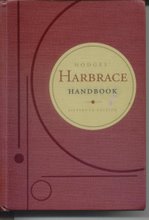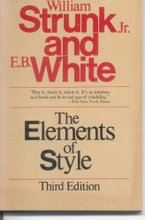 The SAT essay is scored by two readers, each of whom grades on a scale from 1 to 6. So you're aiming for two sixes -- boxcars in dice-throwing terminology.
The SAT essay is scored by two readers, each of whom grades on a scale from 1 to 6. So you're aiming for two sixes -- boxcars in dice-throwing terminology.In the story below, Tamar Lewin of The New York Times shows that you don't need to be perfect, or even have perfect spelling, to get a 6. To read the story and see several sample essays, click here.
One kid got a 6 even though he quoted from the musical Cats, which might earn an automatic 1 from some graders. Another did such a good job discussing Elie Wiesel's Night that the graders forgave his misspelling of "hindrance."
West High School English teacher Shannon Jackson, who grades AP essays, says that, indeed, graders are supposed to think of the esays as drafts, because of course that's what they are. So you truly can get a perfect 6 without being perfect.
Scoring The Essay Question
Perfect’s New Profile, Warts and All
By TAMAR LEWIN
Published: September 3, 2006
WHEN it comes to the SAT, perfect is now a whole lot harder. But take heart if you favor cursive over printing, the third person over the first, and more over less. You may have an edge.
More than 1,000 students got a perfect 1600 last year, when the college-admissions test consisted of the time-honored two 800-point sections, verbal and math.
But now that the test has been revamped and expanded to nearly four hours, with a new writing section that includes an essay, the average scores have dropped by seven points — and only 238 students received the new perfect score of 2400.
Technically, even perfect isn’t necessarily perfect. Students can get the top score even if they miss a few questions.
“We actually don’t know how many got a perfect perfect,” said Caren Scoropanos, a spokeswoman for the College Board.
What the College Board does know is that the top scorers comprised 131 boys and 107 girls, or just 0.017 percent of the almost 1.5 million college-bound seniors who took the test.
It seems to be the writing test that has made the number of perfects plummet. While the math and reading sections each had more than 8,000 top scores, only 4,102 students were rated perfect on the writing test, the only part of the exam where girls outscored boys.
Most of the writing test — and three-quarters of the writing score — consists of multiple-choice questions on grammar and usage. But most of the anxiety among high school students centers on the 25-minute essay, graded on a scale of one to six by at least two readers, who spend about three minutes on each essay. Their two scores are added. And, the College Board said, the reason so few students won top marks on the writing section is that so few — less than one percent — got sixes from both readers, for that perfect 12.
The SAT Scoring Guide says an essay gets a six if it “effectively and insightfully develops a point of view on the issue,” “demonstrates outstanding critical thinking,” “is well organized and clearly focused,” and “exhibits skillful use of language.” Grading is holistic, with no points off for spelling errors or small linguistic flaws.
Last week, when the board released 20 top-scoring essays, all on the topic of whether memories are a help or a hindrance, it was impossible not to notice that many were — what’s the right word? — awkward:
“Memory is often the deciding factor between humans and animals,” one started.
“It is a commonly cited and often clichéd adage that people learn from their mistakes,” wrote another.
“We reason only with information, that is, reason is the mortar that arranges & connects pieces of information into the palace of understanding,” said a third.
Ed Hardin, who helped develop the writing test for the College Board, has an explanation: “Someone has to get a six,” he said. “Student writing, over all, is not very strong, which is the reason we added the writing test to the SAT. We hope they’ll get better.
After analyzing the results, the board had these insights for the next crop of SAT-takers:
- Eighty-four percent of the essays took up more than one page, and longer essays were more likely to get a high score than shorter ones. (Two pages is the limit.)
- Most essays were printed, but those written in cursive got slightly higher scores.
- About half the essays were written in the first person, but those that did not use the first person got slightly higher scores.
And on the essay, at least, it’s possible to get a six without coming anywhere near perfect.
WHAT PRACTICE MADE? Misspellings are no “hinderance” to a perfect score on the SAT essay. Scorers looked for “clear and consistent mastery” in areas like critical thinking. They found it, apparently, in these essays, whose opening words are shown. Students were asked, “Do memories hinder or help people in their effort to learn from the past and succeed in the present?”







2 comments:
Seriously? When I get a TIP OF THE DAY and read the entire article and THEN find out you culled it from a five year old NY TIMES article.....It lessens your blogs credibility. Dusty. Verrrry dusty.
It would be pretty much better for the students to regard about all those concerns and probabilities which are indeed considered to be of utmost importance. manuscript format
Post a Comment